Dive with Giants: The Caribbean's Big Animal Encounters
There’s a common misconception among divers that the Caribbean is all about sunny reefs and their jewel-colored (and -size) denizens — that for the large, dynamic predators and pelagics you have to head to the Pacific. Not so, we say. From Tobago and the Bahamas to the Riviera Maya, the Caribbean’s cast of big animals stars mantas, sperm whales, whale sharks and more. Here's where to snorkel and scuba dive with some of them.
To learn more about the world's best destinations for scuba divers, visit the Travel section of our website.
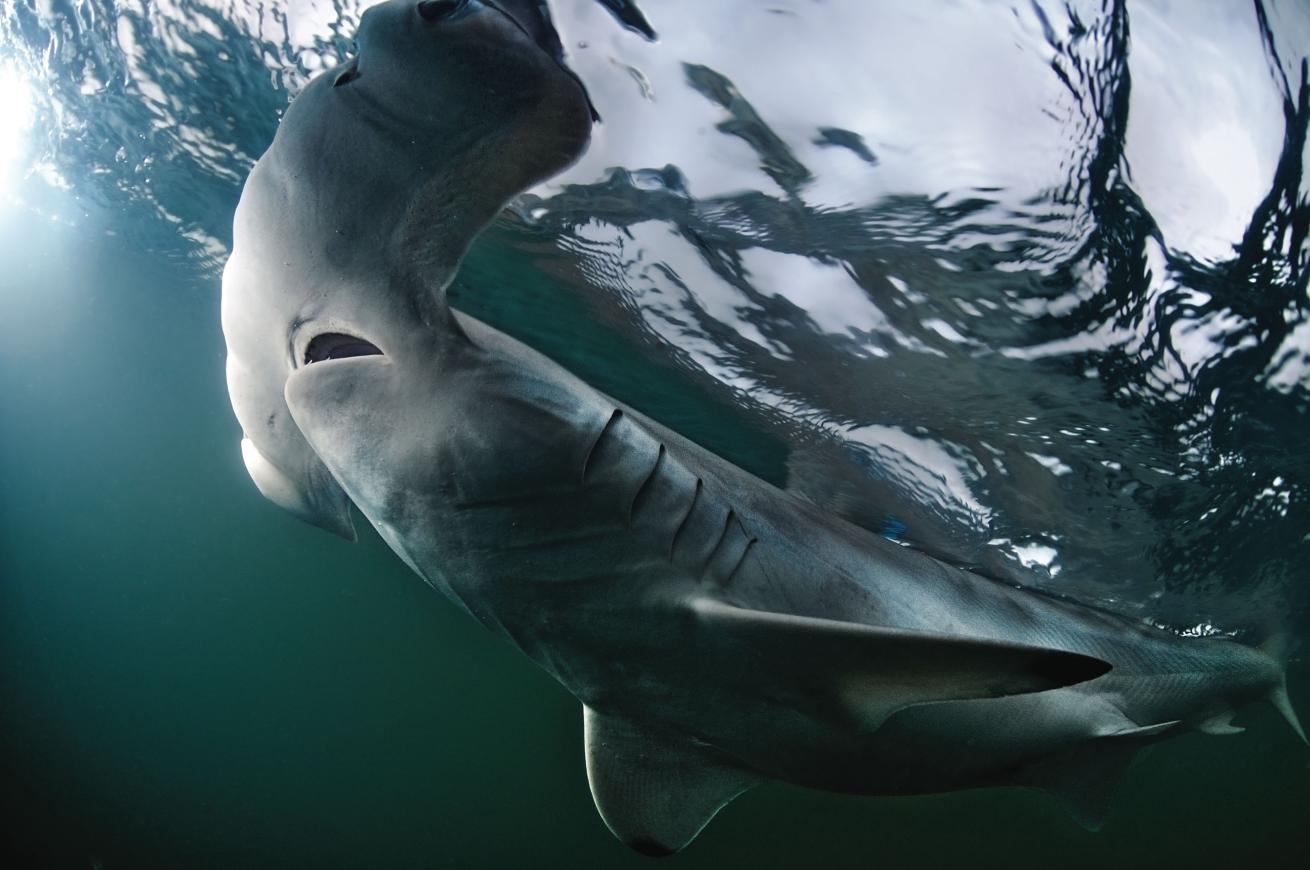
David GarciaFrom Tobago and the Bahamas to the Mayan Riviera, the Caribbean's cast of big animals stars mantas, sperm whales, whale sharks, hammerheads and more.
There’s a common misconception among divers that the Caribbean is all about sunny reefs and their jewel-colored (and -size) denizens — that for the large, dynamic predators and pelagics you have to head to the Pacific. Not so, we say. From Tobago and the Bahamas to the Riviera Maya, the Caribbean’s cast of big animals stars mantas, sperm whales, whale sharks and more. Here's where to snorkel and scuba dive with some of them.
To learn more about the world's best destinations for scuba divers, visit the Travel section of our website.
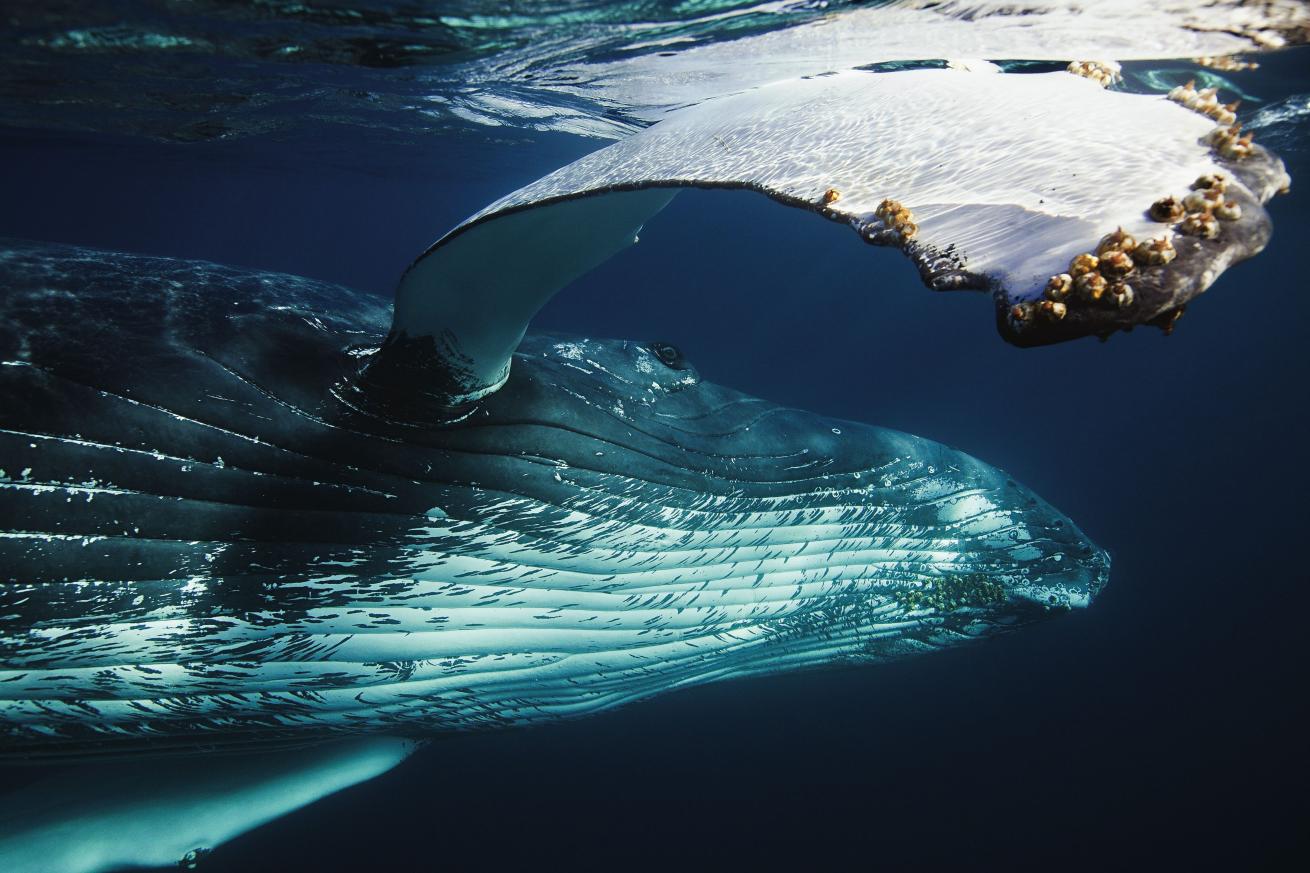
Daniela Dirscherl/Agefotostock
Anyone who’s encountered one will tell you that gazing into the eye of a humpback whale is a life changer. Every winter, thousands of them make like snowbirds, traveling up to 4,000 miles from the cold north Atlantic waters to reach the balmier breeding and calfing grounds off the Dominican Republic. live-aboards depart from Puerto Plata for trips to Silver Bank, about 70 miles off the north coast of the DR, where you’ll don a mask, snorkel and fins (scuba and rebreathers are not allowed) for “soft-in-water” encounters. Since only about 500 guests are permitted each year, overcrowding is rarely an issue. Guides are careful to approach only resting or courting whales that are most likely to be open to interaction.
MAKE IT HAPPEN: Turks & Caicos Aggressor (aggressor.com) runs weeklong live-aboard charters to the Silver Bank January through March from Puerto Plata, Dominican Republic, that start at $2,895 per person.
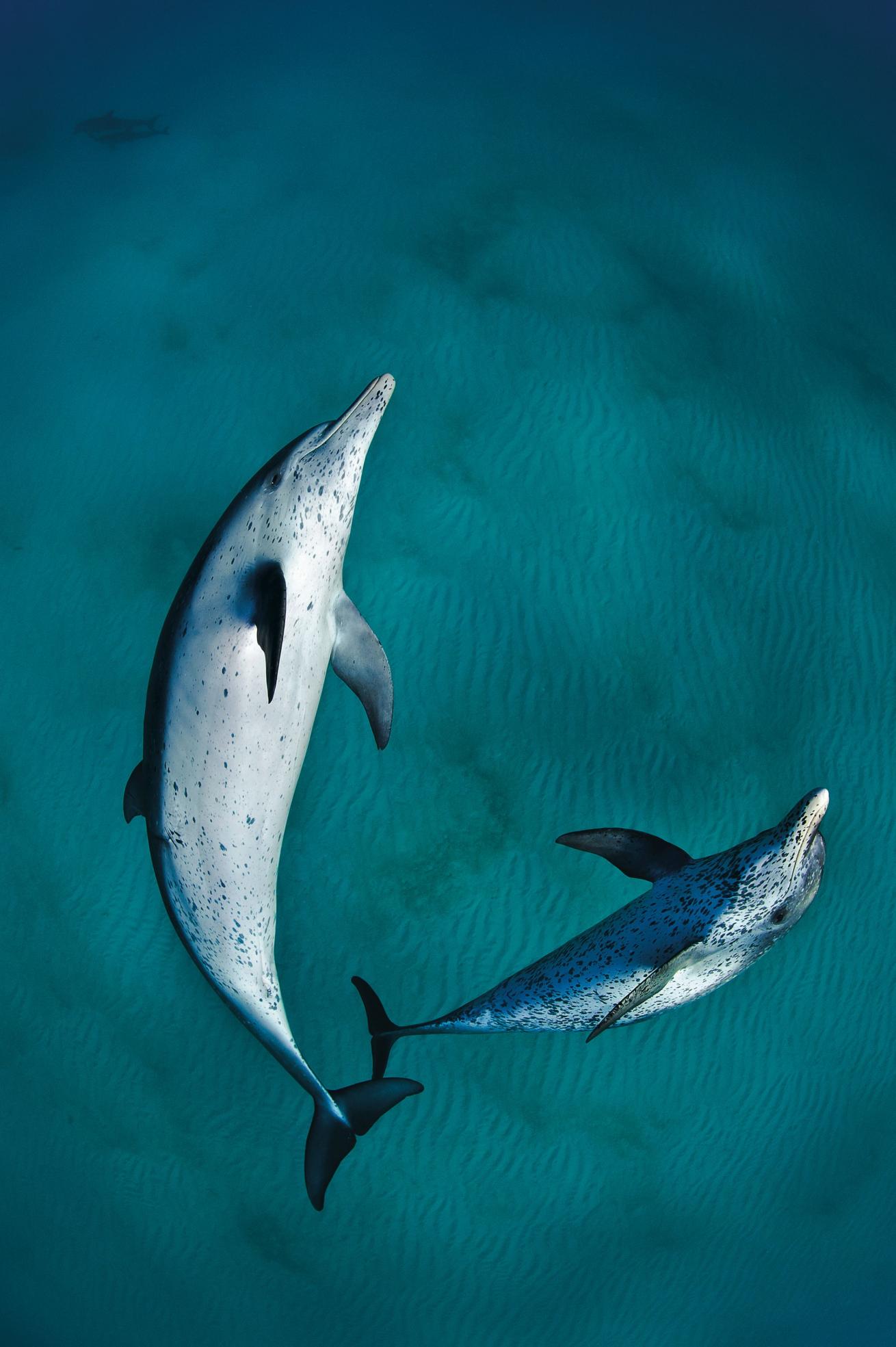
Alex Mustard
Dive long enough in most parts of the Caribbean, and you’ll eventually come across a pod of dolphins on the boat ride back to shore. There’s nothing quite like hearing the chattering all around you and then watching a dolphin (or 20) materialize from the blue and cruise past for a curious look. The warm, clear waters of the Bahamas are one of the best places in the world to observe wild dolphins underwater. Snorkeling trips to observe spotted dolphins leave from Florida and Grand Bahama to nearby shallow sandbanks where the animals are often seen socializing. That they actually seem to seek out human interaction is icing on the cake. No controlled “experience” could ever compare.
MAKE IT HAPPEN: Bimini Big Game Club (biggameclubbimini.com) offers a Dolphin Encounter with wild Atlantic spotted dolphins in the shallow waters surrounding Bimini for $120 per adult and $100 per child.
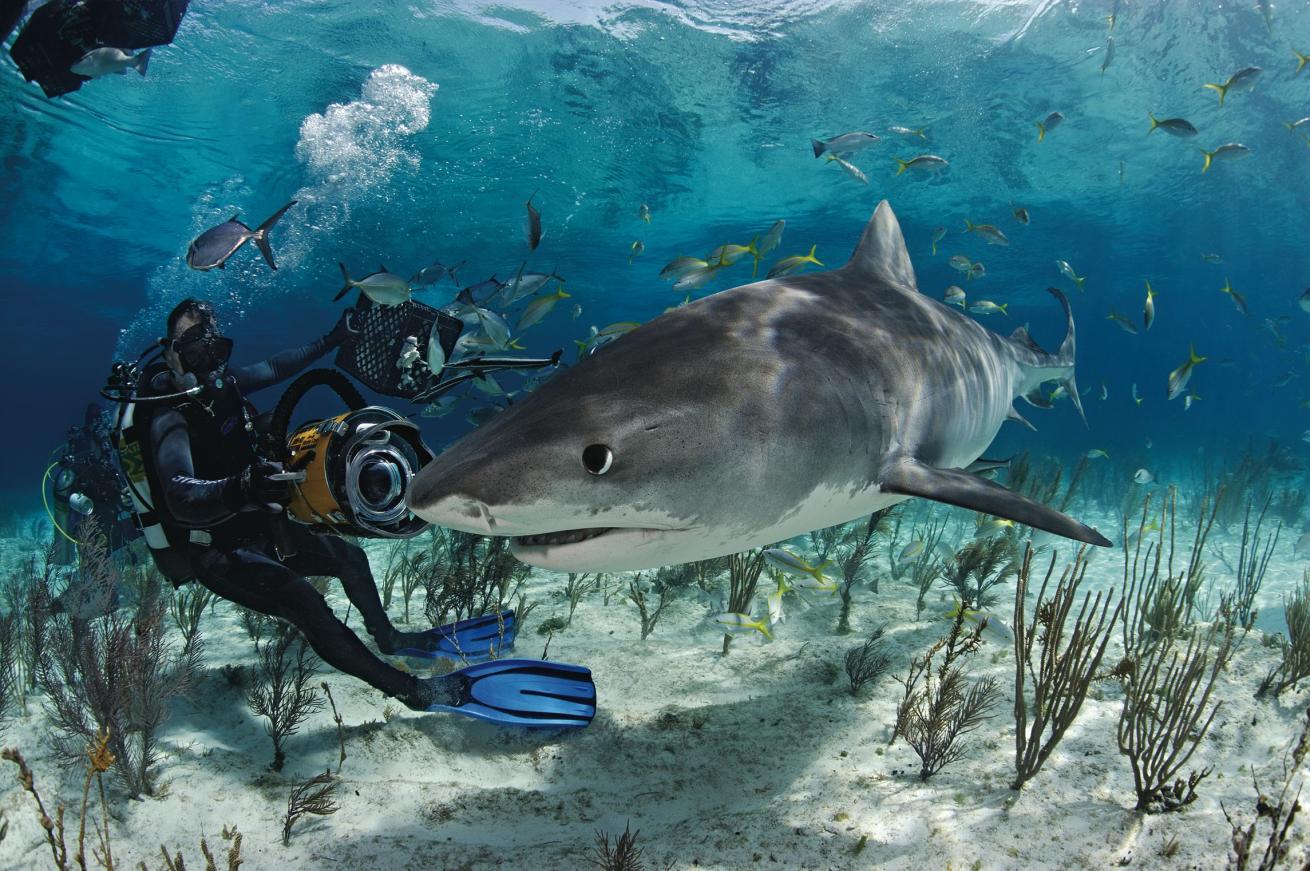
Brandon Cole
Most (planned) great-white encounters take place in a cage. Which makes it all the more thrilling that you can encounter one of the ocean’s other top predators — the tiger shark — with no bars blocking your view during dives at legendary Tiger Beach off West end, Grand Bahama. Divers come from all over the world for the chance to come face to tooth-splayed face with the striped hunters. After an extensive briefing (yes, chum is used to attract the sharks and, yes, you might need to use your camera or the safety bar provided to push them away), it’s directly down to the sand to take in the spectacle. Lemon sharks and reef sharks usually show up first, and then it’s tiger time, with most animals ranging between 8 and 12 feet long.
MAKE IT HAPPEN: Stuart Cove’s Tiger Beach Seafaris (http://www.stuartcove.com/tigerbeachhome.aspx) offers encounters at Tiger Beach for $250 per day, or packages that start at $571.
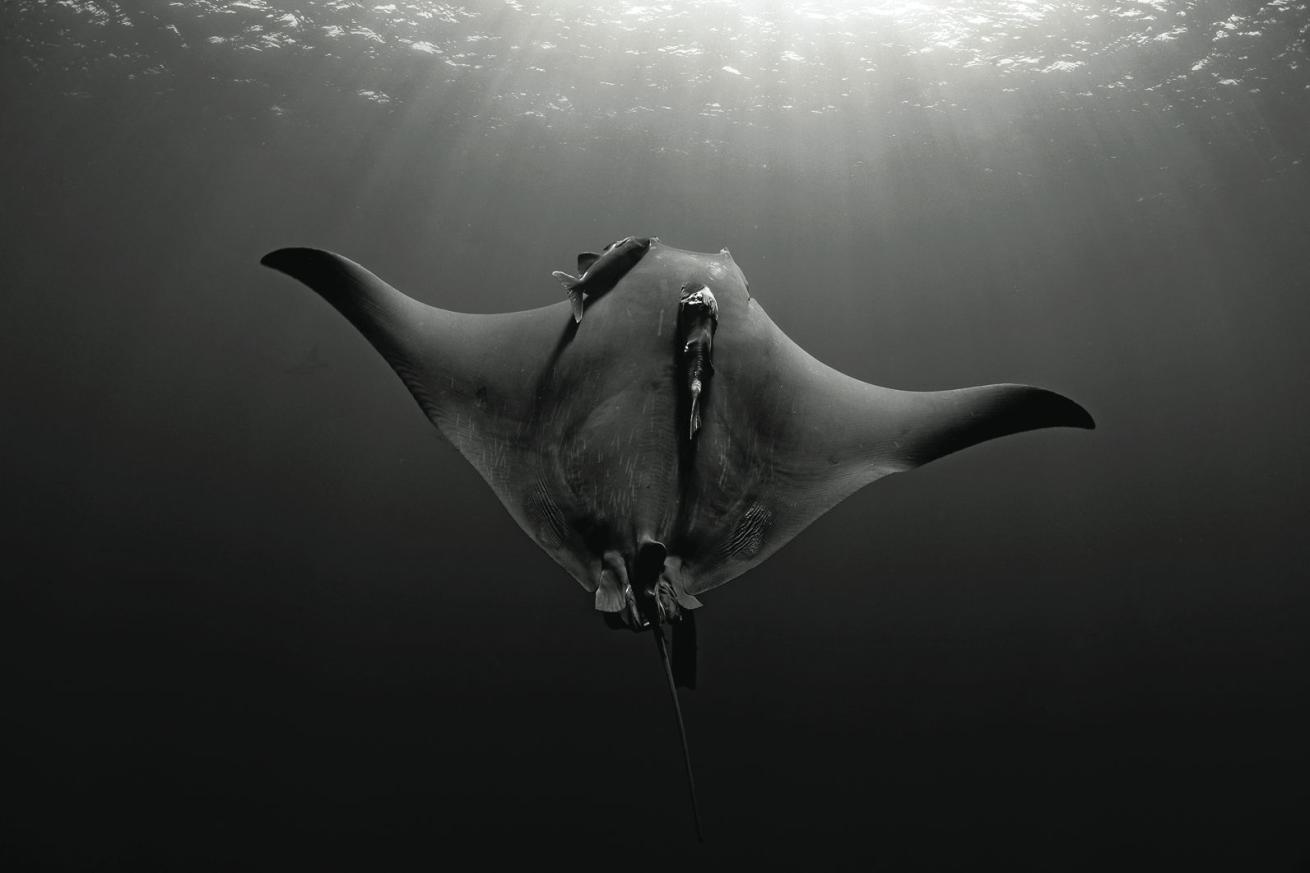
Nuno Sa
Thrilling drift dives and healthy reefs are top lures of their own, but when you add manta-ray encounters to the equation, the Caribbean isle of Tobago holds its own among the world’s top dive destinations. The nutrient-rich waters here, constantly fed by currents sweeping the coast, draw enormous manta rays to sites like manta city. The spring and early-summer months bring the animals in the largest concentrations. Another Caribbean locale where you just might find yourself witnessing the manta dance is Turks and Caicos, where the species can be encountered off Grand Turk and Providenciales during summer months.
MAKE IT HAPPEN: The Blue Waters Inn in Speyside (bluewatersinn.com) runs daily two-tank dive trips for $90, as well as multidive packages.
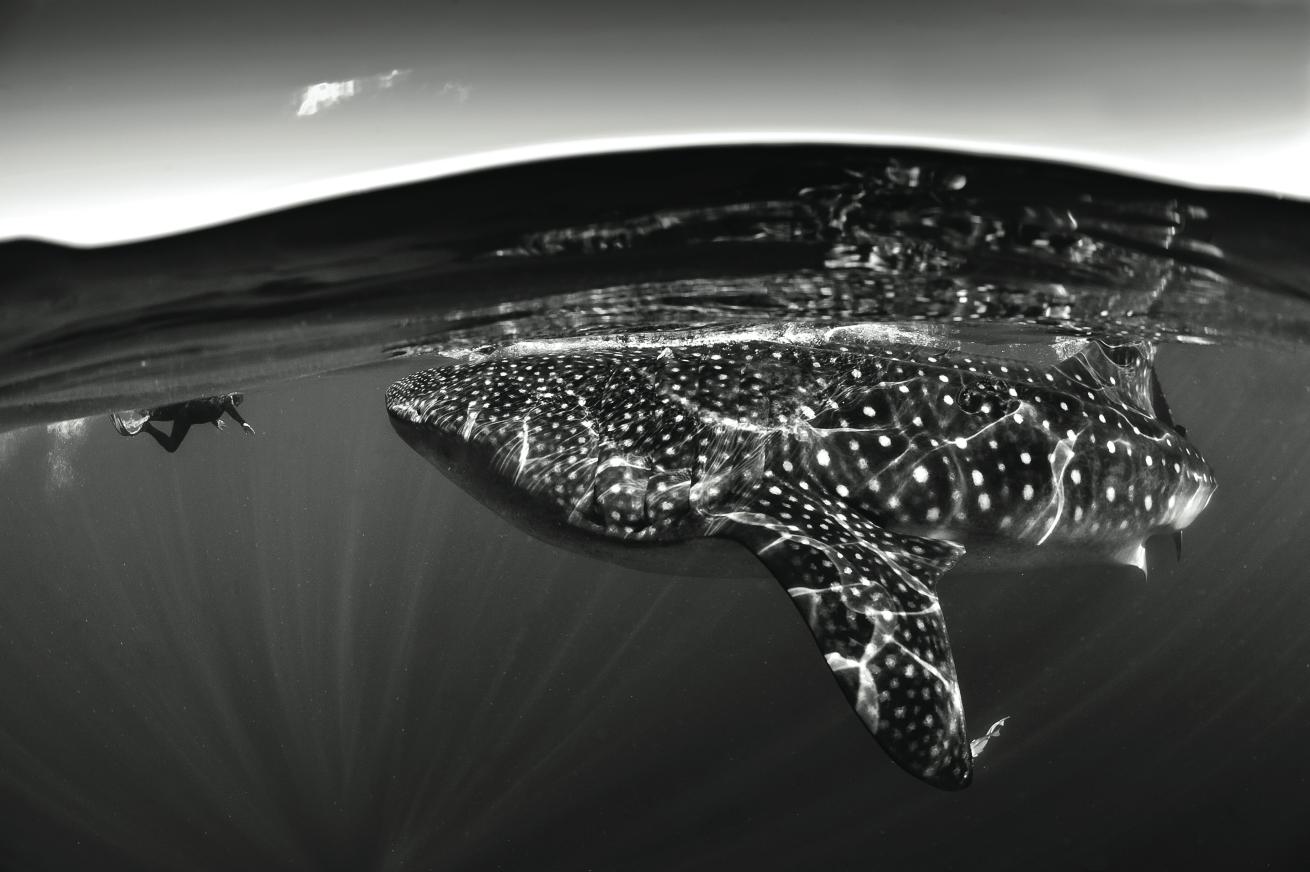
Julian Cohen
For their sheer size and magnitude, whale sharks are one of the most thrilling big animals to encounter in any ocean. And several Caribbean locales are among the most reliable and prolific spots on the planet to get in the water with them. During the full moon from March through June, spawning snapper aggregations at Gladden Spit in Belize draw whale sharks to the area to gorge on gametes as divers watch from below. And while Holbox might be Mexico’s best-known spot for snorkeling with whale sharks, the deeper-feeding waters of Isla Mujeres bring encounters with animals up to 50 feet long as they feed on bonito spawn (June is the best time, but the season runs to September). The spring months are best for snorkeling with whale sharks in Utila, but this Bay Island destination is reportedly the only place on Earth with confirmed sightings every month of the year.
MAKE IT HAPPEN: Splash Dive Center (splashbelize.com) in Placencia, Belize, offers whale-shark dives for $210 and snorkeling for $110.
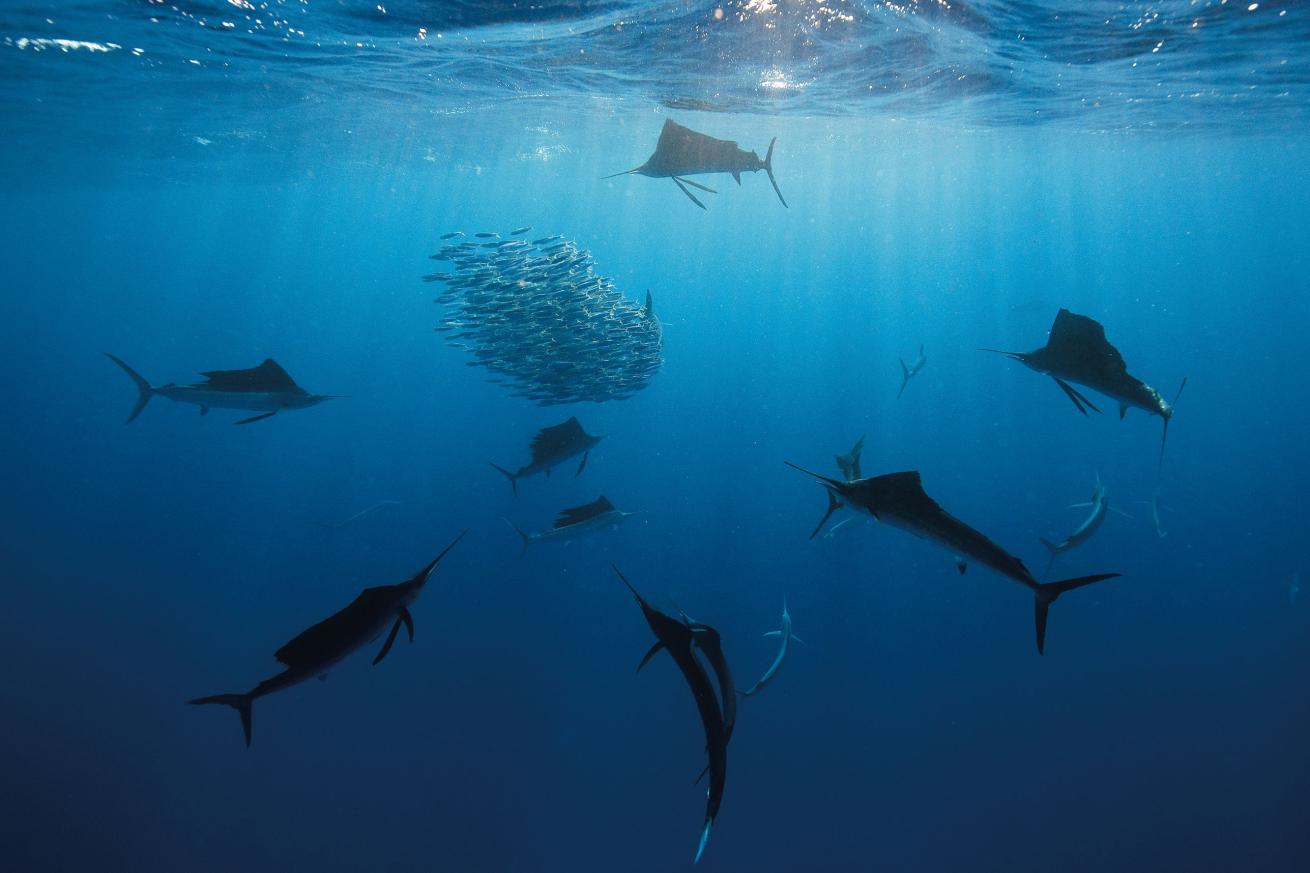
Amos Nachoum
The Caribbean’s version of South Africa’s famous sardine run plays out from January to March every year in the clear waters of Isla Mujeres off Mexico’s Yucatán as schooling sardines lure hungry Atlantic sailfish for a frenzied feast. Guides look for frigate birds dive-bombing a baitball, then it’s into the drink with a mask and snorkel to watch the swift hunters flash their iridescent stripes, corral the sardines, and home in for a piercing kill. The sardines are attracted to the plankton-rich waters, and it’s clear, when you see the sailfish in action, that their efforts are coordinated. While some individuals busy themselves corralling the pack of sardines and preventing an escape, other sailfish hunt closer to the surface. A more elegant predator — and a more eye-popping underwater sight — is hard to find, anywhere.
MAKE IT HAPPEN: Squalo Adventures (squaloadventures.com) does sailfish dives January and February for $115 per person.
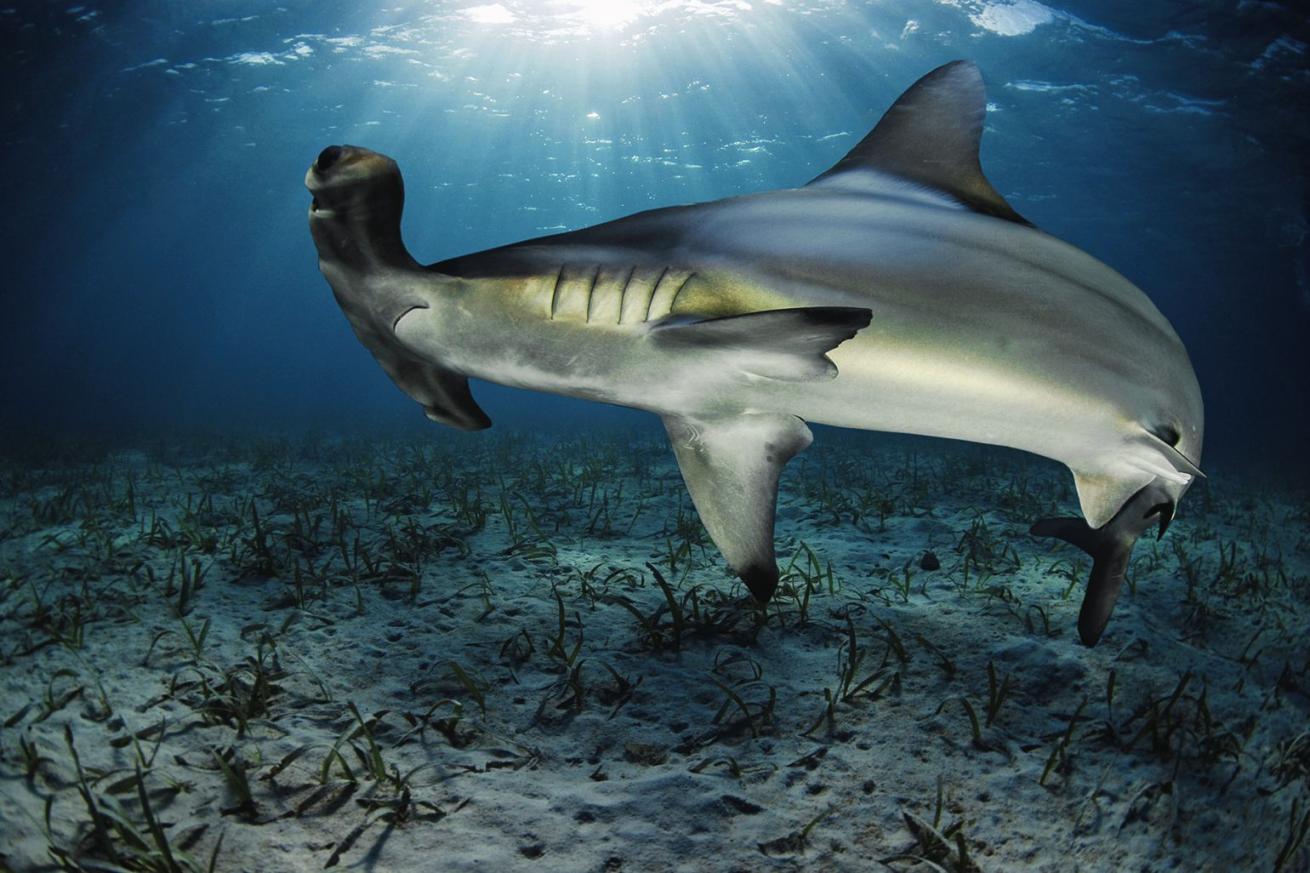
Carlos Villoch
For many divers, hammerhead sightings top the bucket list. And the fabulously sharky Bahamas is the rare Caribbean locale where you have an excellent chance of seeing them. Take an outer island hopper to tiny San Salvador, one of the most southeastern islands of the Bahamas, for your best opportunity to dive with the scalloped hammerheads that frequent the deep walls offshore. That visibility usually hovers around 100 feet, making the reward of having your underwater camera in tow that much sweeter. Tobago’s wild offshore pinnacles, the sisters, are another hot spot for hammers. Adrenaline factor? Through the stratosphere.
MAKE IT HAPPEN: Riding Rock Resort & Marina (ridingrock.com) on San Salvador offers scuba adventures from a $90 two-tank dive trip to multiday packages.
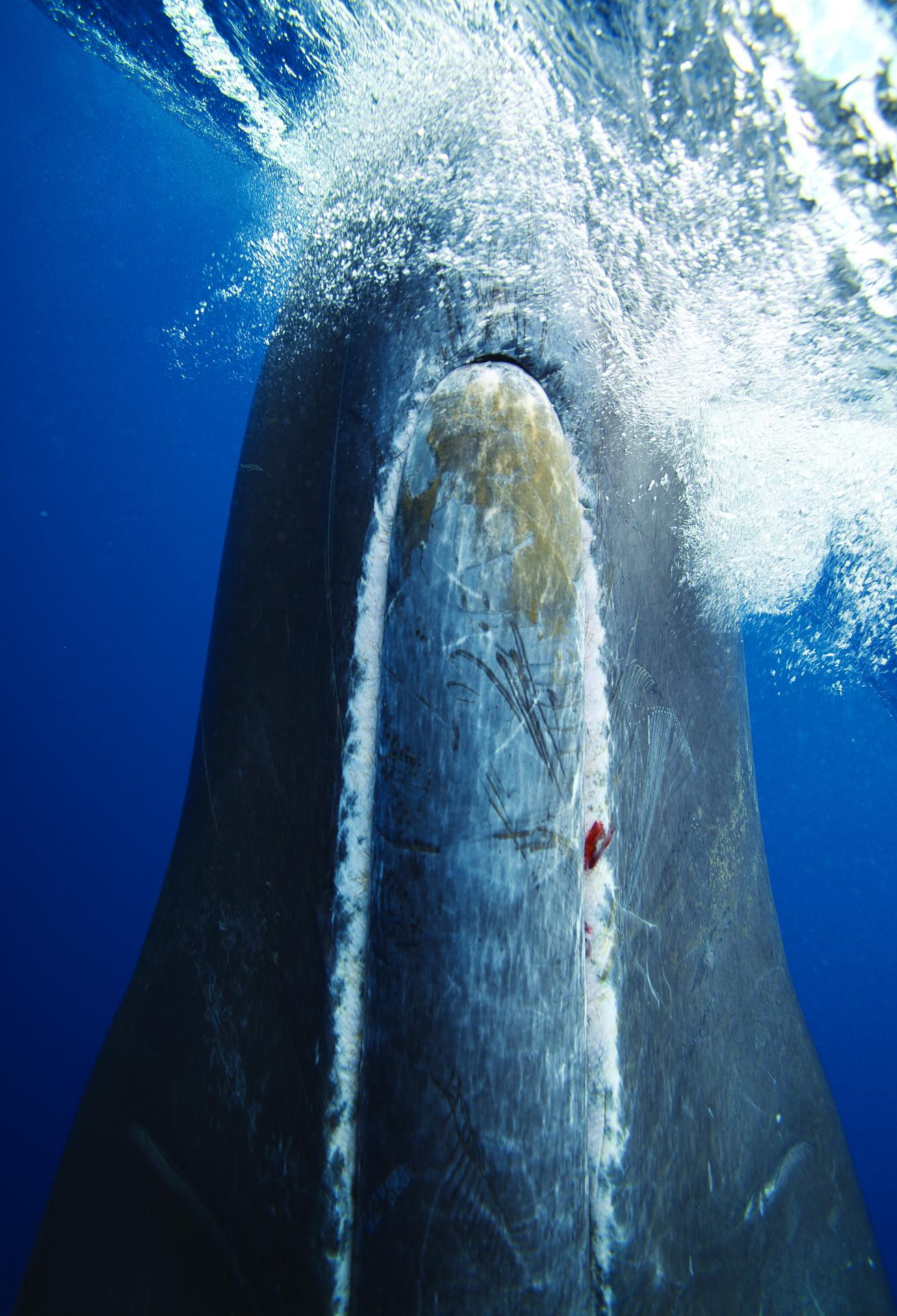
Eric Cheng
Diving to depths of 3,280 feet for up to 90 minutes, sperm whales are among the most fascinating Caribbean cetaceans. The deep water surrounding the volcanic island of Dominica is a reliable spot to see the resident pod that breeds there. Getting into the water with the animals is a rare privilege that requires special permits, but you can marvel at the behemoths during whale-watching trips. Other Caribbean spots to see sperm whales include St. Lucia and Grenada. Listen for their telltale clicking and keep your eyes trained on the blue during any dives here — you never know what might fin past.
MAKE IT HAPPEN: Dive Dominica (divedominica.com) runs weekly whale-watching trips on Sundays for $50, as well as daily two-tank boat dives for $90.










